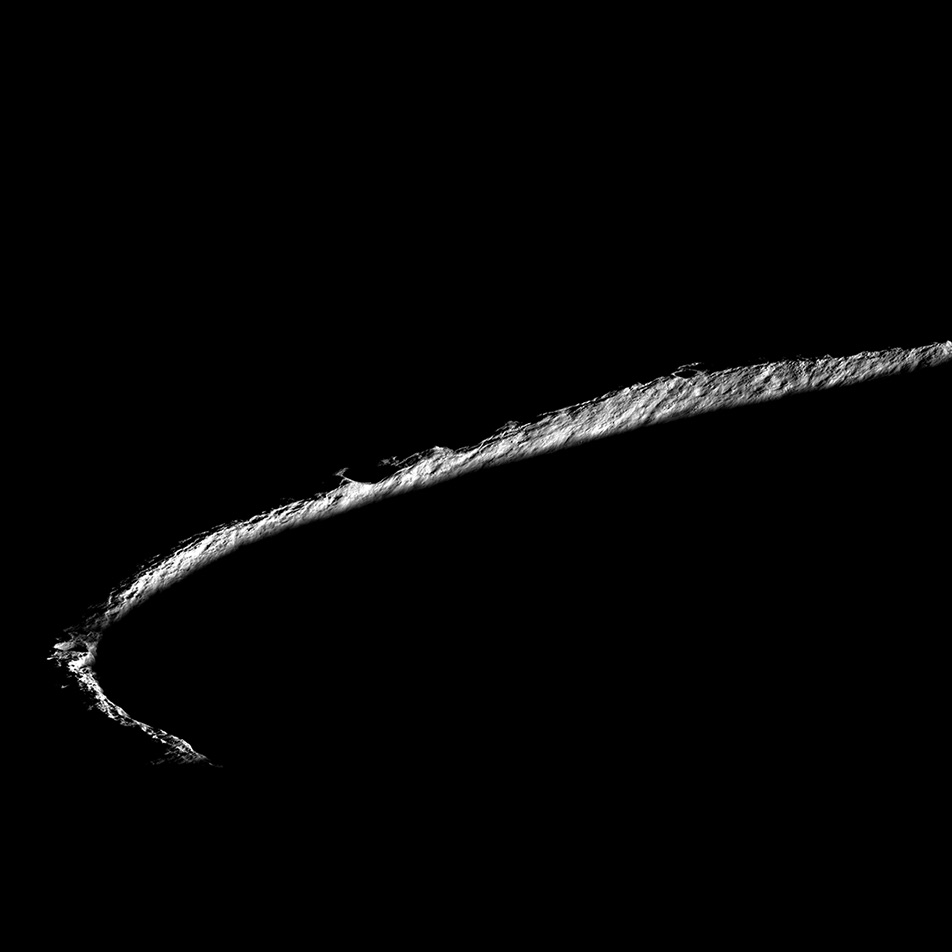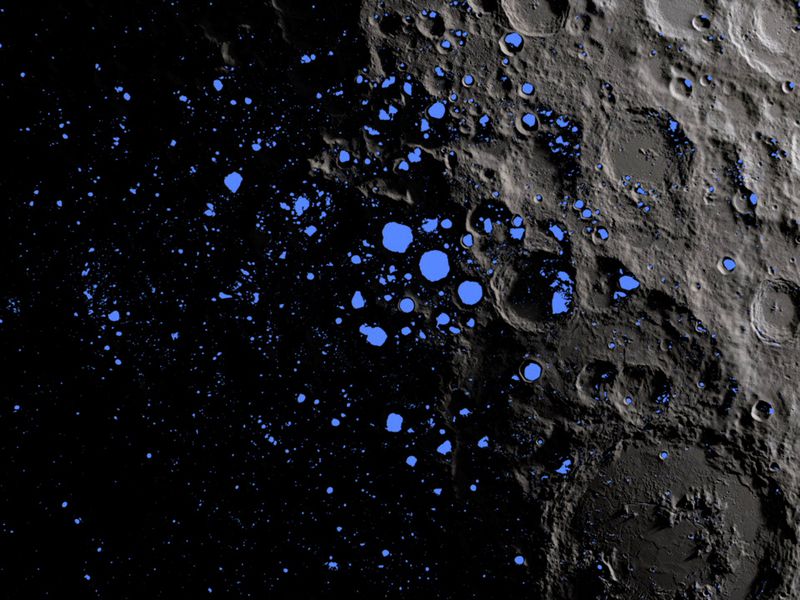Ice on the Moon
origins and distribution
Is the Moon wet? Over the last several years, new data from remote sensing and sample analysis revealed greater amounts of water on the lunar surface than previously thought. Concentrations of water at the poles indicate the presence of ice deposits, which could reveal a history of comet and asteroid impacts, solar wind, and outgassing from the Moon’s interior.



Many mysteries remain regarding lunar volatiles: What are their present and past sources? How are volatiles delivered, transported, and sequestered? What is the role of small-scale shadowing on temperature and ice stability? To investigate some of these questions, we used data from several instruments on the Lunar Reconnaissance Orbiter, including thermal data from the Diviner Lunar Radiometer Experiment. By comparing the distribution of cold traps (~110 K for H2O) with ultraviolet and near-infrared spectral data, we discovered a signature of water ice sequestered in the dark polar shadows. Further observations and modeling are needed to understand the patchy distribution of lunar volatiles, and whether their concentrations are high enough for in situ resource utilization.
Further information:
- Hayne, P. O., Hendrix, A., Sefton-Nash, E., Siegler, M. A., Lucey, P. G., Retherford, K. D., ... & Paige, D. A. (2015). Evidence for exposed water ice in the Moon’s south polar regions from Lunar Reconnaissance Orbiter ultraviolet albedo and temperature measurements. Icarus, 255, 58-69. Link
- Hayne, P. O., Greenhagen, B. T., Foote, M. C., Siegler, M. A., Vasavada, A. R., & Paige, D. A. (2010). Diviner lunar radiometer observations of the LCROSS impact. Science, 330(6003), 477-479. Link